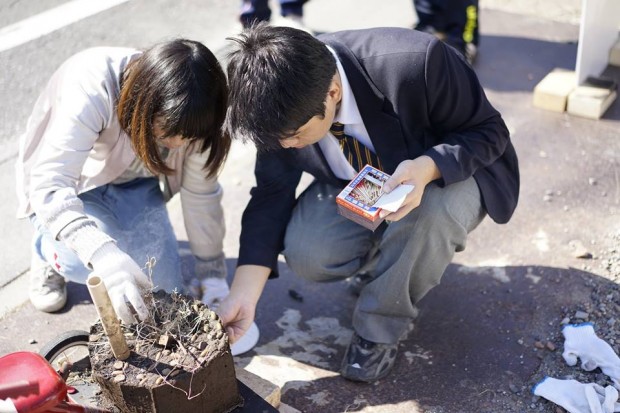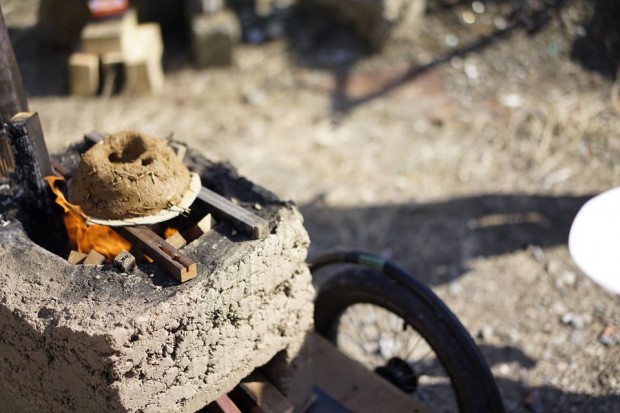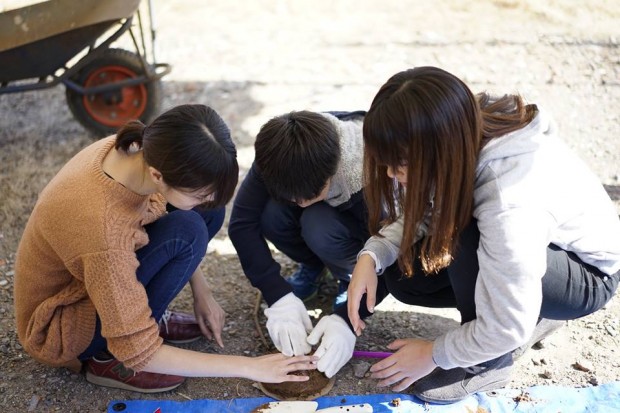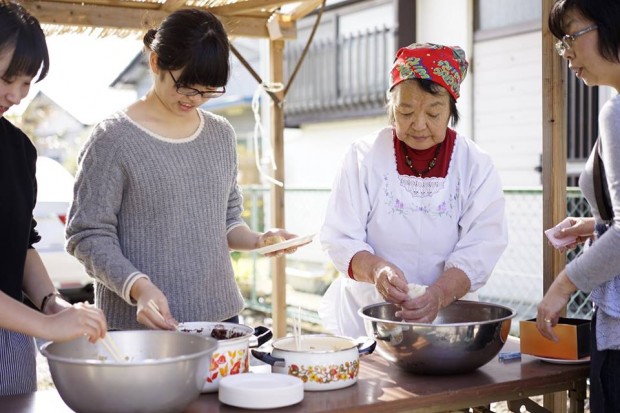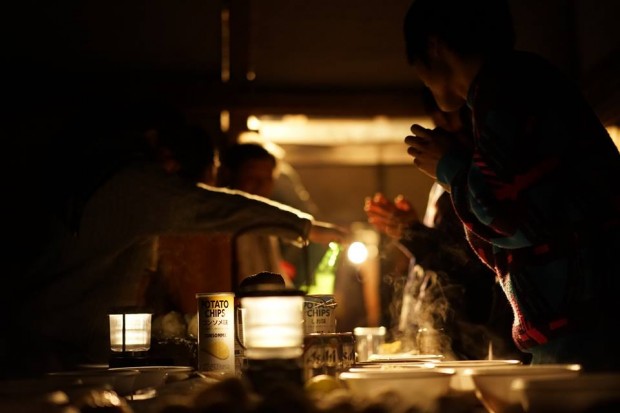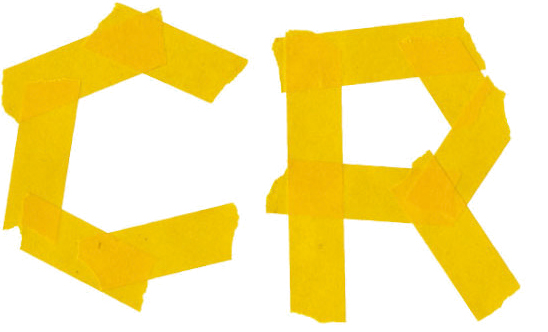On Mar. 4 (Fri), as we approach the day 5 years after the Great East Japan Earthquake, an international symposium organized by the CR Project, “The Possibilities for Art in Disasters”, was held at the International House of Japan (Roppongi, Tokyo). Many people including those who gave much support to the activities of CR came, totaling over 100 visitors.
In the first part, those on the stage introduced their actual artistic practices in the state of a disaster from their respective points of view. In the second part, a discussion was conducted on the possibilities for the role of art in disasters. A heated discussion was carried out covering a wide range of subjects including the topic of what should be the role of art museums and gallery spaces from the perspective of disaster and art, about the on-going exhibition in an area where residence is restricted due to the nuclear power plant accident. Another theme was in reference to the compatibility of the results of CR’s activities carried out in the disaster-stricken areas and the educational effect as a university.
I would like to thank everyone who came.
(Iida)
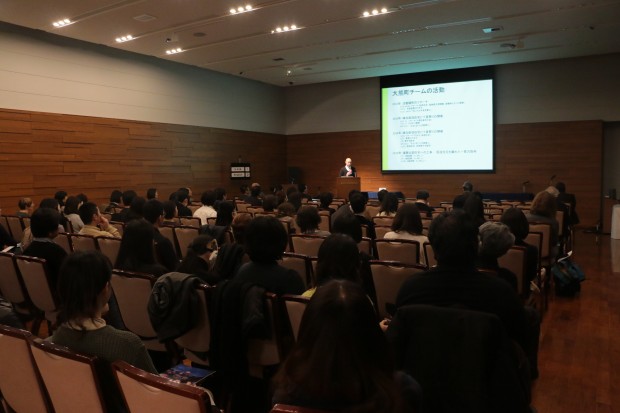
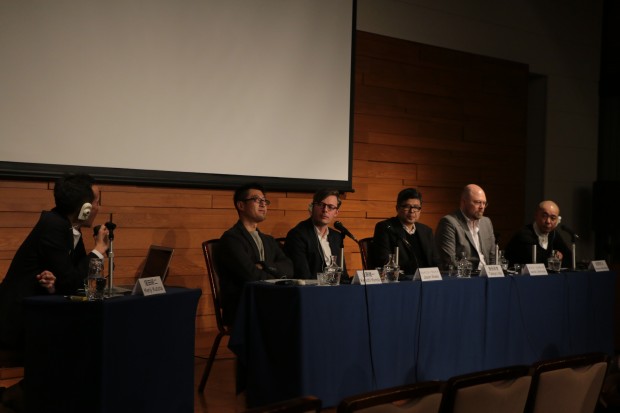
Category Archives: Lessons
Hybrid Art Assignments: Light Art Exhibition
Between Feb. 8 (Mon) and Feb. 14 (Sun), the Hybrid Art Assignment Class Team held an LED Light Art Exhibition, “The Ark in the Woods Art Project: Woods, Light, Water”, in Mishima-machi, Kawai district in the Oku-Aizu region of Fukushima prefecture.
The project is a continuation from last year, and the goal is to artistically visualize and show the world the subject of turning natural energy into electricity, an issue that Japan is dealing with, by employing art and leading-edge technology, and to make a beautiful presentation in Mishima-machi, which is a district with abundant forests and mountains.
The electricity for the exhibition is entirely powered by natural energy generated by micro hydro-power and by stove thermoelectric generators developed in collaboration with an NPO.
This year, also on display were works of light art with mechanical support from Color Kinetics Japan Inc. and Nissan Motor Co., Ltd.
In preparation for the exhibition, we stayed over night in the area, in November and December of 2015, to conduct surveys of the locality. Since the local people showed us their folk art and farming tools, introduced us to the local history and landscape, we became familiar with the culture of Mishima-machi and were able to incorporate some of the elements in our artwork. Light art in snow country was a first time experience for the participating students, and as they worked through trial-and-error and with the generous support of the local residents and public officials of Mishima-machi, a wonderful exhibition was once again created this year.
A beautiful zone unfolded in Mishima-machi with its natural riches and warmth and light art all in harmony.
(Bekki, 4th Year at School of Art & Design)
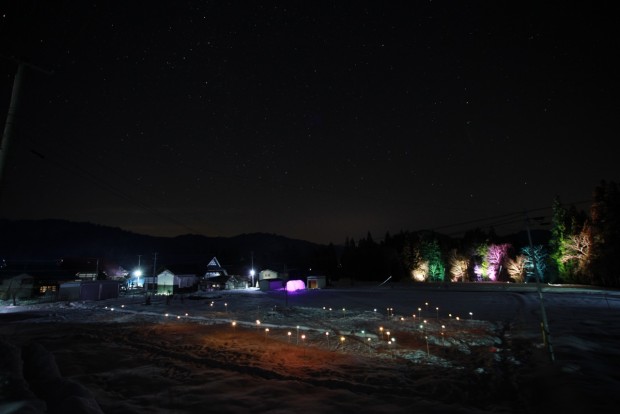
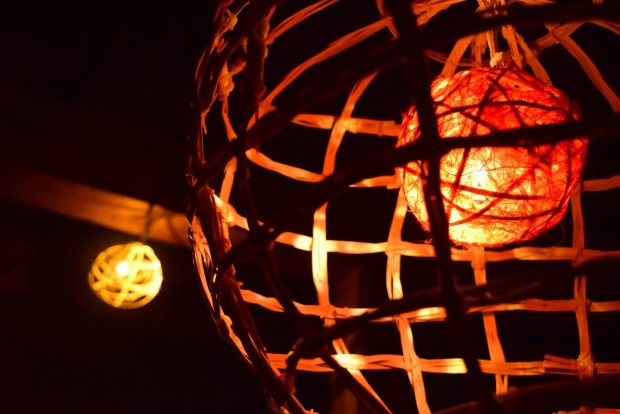
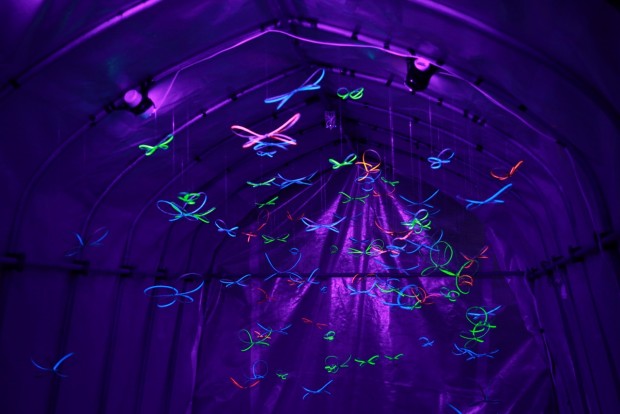
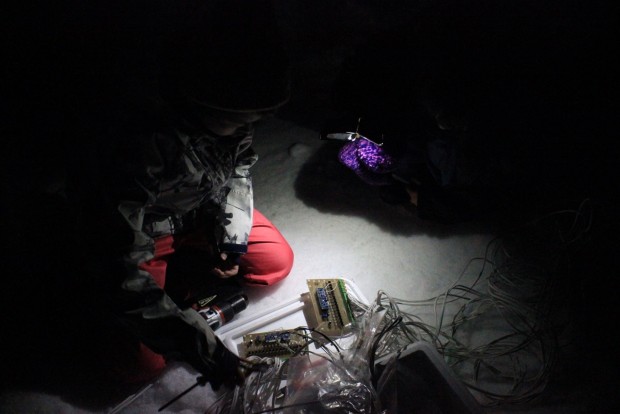
Taikan Taiken (Feel & Experience) Lab held “Hanawa-machi Legend of the Lake/Yoshiie and the Giant Dragon of the Lake Workshop”
On Saturday, Feb. 20, 2016, we held a puppet-show workshop at Hanawa-machi in Fukushima.
The participants consisted of 36 pupils, 1st through 6th graders, living in Hanawa-machi. The pupils who had volunteered for the workshop were called the “Hanawa Taken-tai (Expedition Team)”, and the fiscal year 2015 was their 9th and last time. That is why they all participated with much enthusiasm and energy.
The story of the puppet show was written based on a legend of the lake, which has been handed down in Hanawa-machi from the distant past. The characters involve Hachiman-Taro-Yoshiie, 3 kappas (river monsters in Japanese folklore) and a big white dragon.
”When Yoshiie was traveling through Hanawa-machi, he came across a large lake. When he approached the lake, he saw a swirling shadow! So Yoshiie climbed to the top of Mt. Yumihari, one of the highest in Hanawa-machi, and shot an arrow at the shadow. Then, a small kappa came out and cried, “Stop! Please help us fight the dragon together.” It also called on the children to make puppets of their friends to help save them. The children worked together and made puppets, which became their friends. Then, in the latter half of the play, 2 elder-brother kappas came out and said that the dragon was actually not a bad one. They asked that the arrow shot by Yoshiie be pulled out from the dragon. When the brother kappas chanted a magic spell, a big white dragon emerged and the children pulled out the arrow. At the end, Yoshiie suggested that they should have a festival to express their joy and everyone danced in a circle and partied. All is well that ends well!”
The workshop was an hour and a half long, but since there were comments such as “Time seemed to fly” in the questionnaires, everyone must have been focused and enjoyed the show. In the questionnaires, there were many positive comments, such as “Had lots of fun” and “The staff helped us a lot”. The fact that the children enthusiastically took part and had a great time was very inspiring and gave the members of the Taikan Taiken (Feel & Experience) Lab a sense of accomplishment, and it also had an interactive synergy effect that was uplifting to all of us. The preparations were hard and obviously quite tough for the students of the lab, but when it was over, we all went home to Tsukuba with a pleasant sense of fatigue and a big smile.
(Ono)
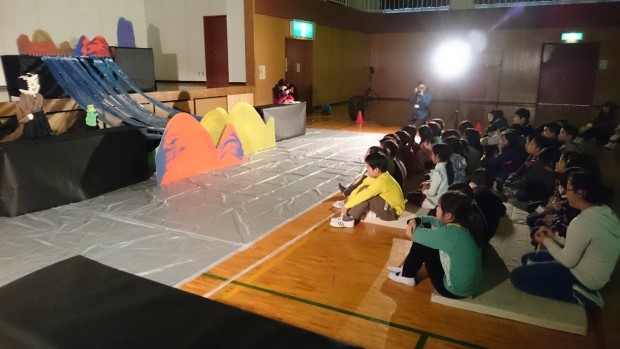
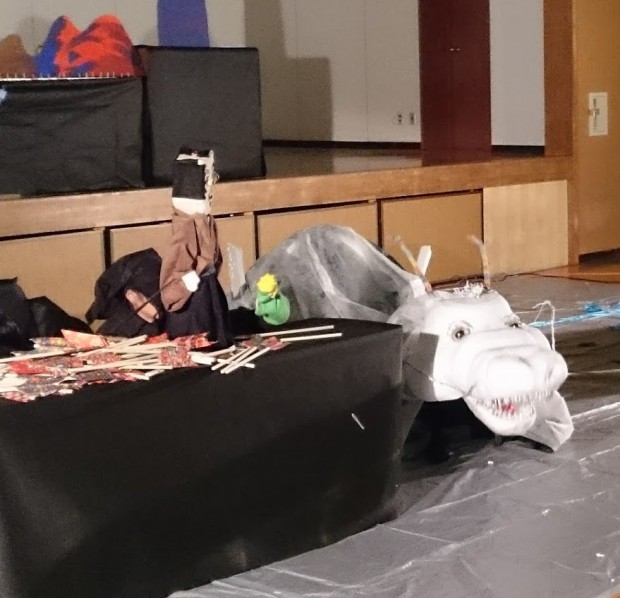
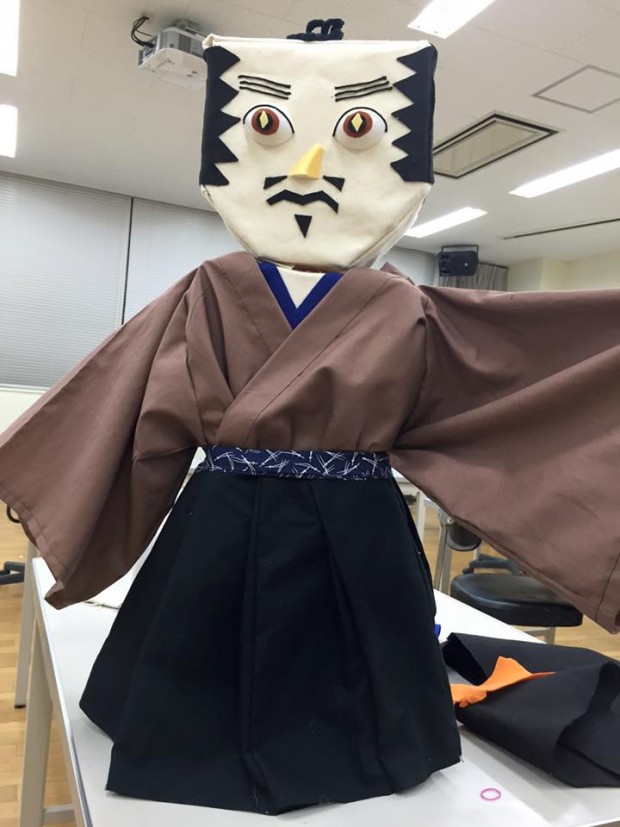
Taikan Taiken (Feel & Experience) Lab held Workshop at Ohzone Children’s Center
On Dec. 9, the Taikan Taiken (Feel & Experience) Lab held a workshop at Ohzone Children’s Center in Tsukuba city.
In preparation for the workshop, we carried out research to understand the characteristic of the children’s center, the age group of the children, as well as the elements that distinguish the area. Based on our findings, we combined the locality, creativity and physicality of the Yatabe district in Tsukuba to come up with a storyline for a puppet show.
In deciding on the storyline, we chose the character, Iiduka Igashichi, an inventor who actually lived in Tsukuba in the Edo Period, and with reference to what we had learned from our visit to the Yatabe Local History Museum, we talked about adopting such key words as “Oda Castle”, “Japanese clocks”, “Karakuri puppets (traditional Japanese mechanized puppets)” as sub-themes.
In the end, we chose to start the story off by relating that an essential part of Igashichi’s Karakuri puppet, which is his creation, had been stolen, and that the villagers decided to make Karakuri puppets of their own to try and help Igashichi. Preparations for the performance started by practicing with the puppets, creating sound effects, choosing materials for making the puppets, checking safety concerns, getting ready for ways to engage with the children, and making use of the experiences that were acquired through the workshops.
The children at the Ohzone Children’s Center were very lively and they were very enthusiastic in their response to the puppet show and making of the puppets. In the scene where they sneak into the thieves’ lair, the children seemed to enjoy the thrill of dodging obstacles in the dark.
Through our experience in conducting workshops, members of the team discovered that games and creative means of expression might lead to emotional care in dealing with children, who are, unlike adults, harder to communicate with words alone. (Nagata, MC1 at School of Art & Design)
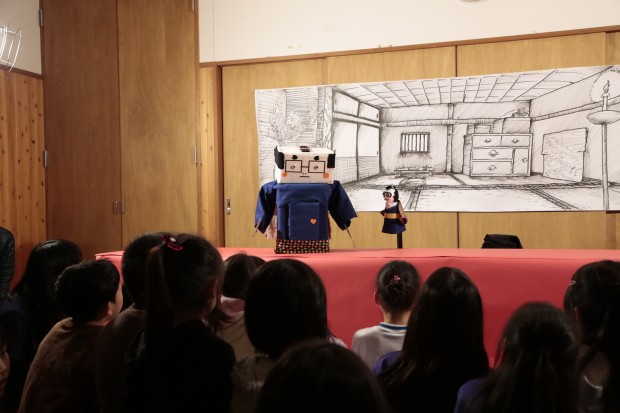
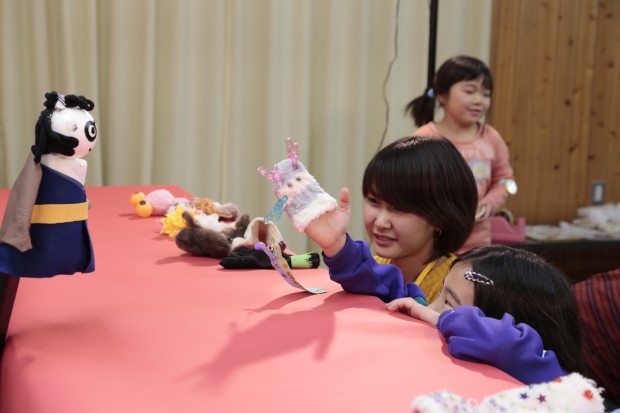

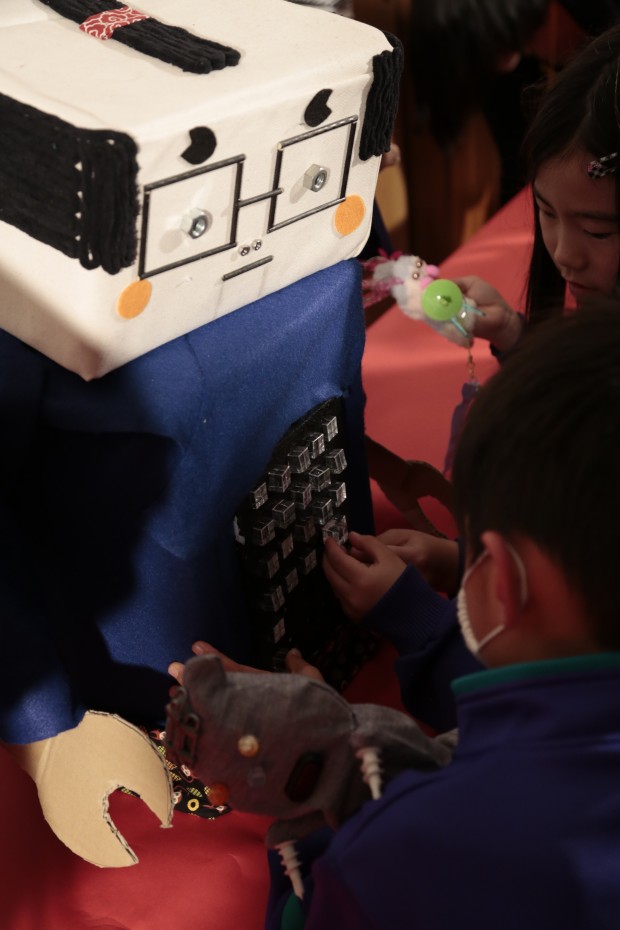
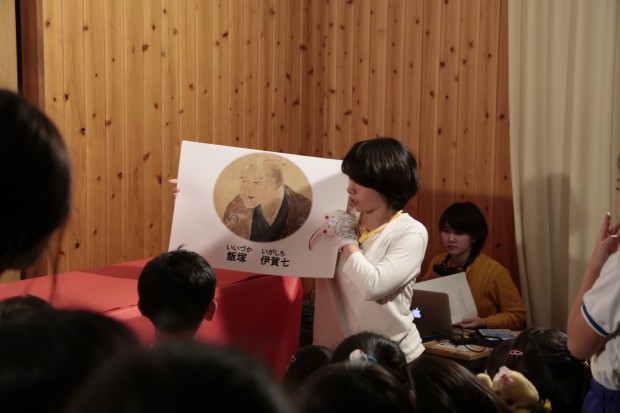
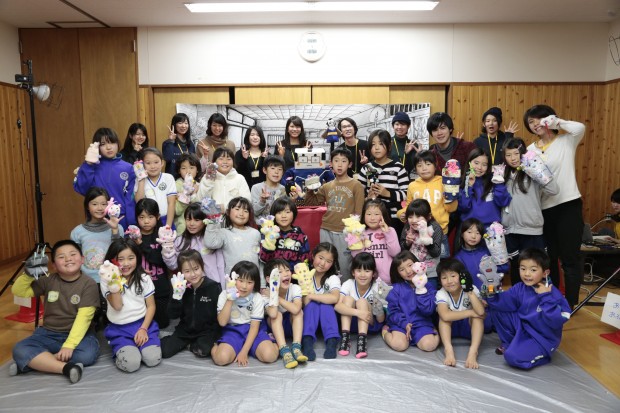
CR Review Meeting for 2015 held.
On Dec. 19, Saturday, the CR review meeting was held. The students, who had completed the Creative Reconstruction Program’s Off-Campus Challenge Assignments/Off-Campus Challenge Special Assignments/Off-Campus Special Assignment I/ Off-Campus Special Assignment II/International Special Assignments, reported on their activities.
The CR project will come to an end this year, and the presentations were based on the possibilities for future developments with references to how the 4 years of activities by the teams might be remembered and how they might be continued. (Akagi)
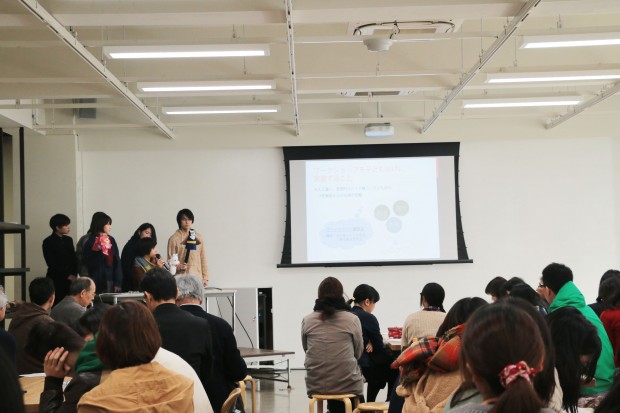
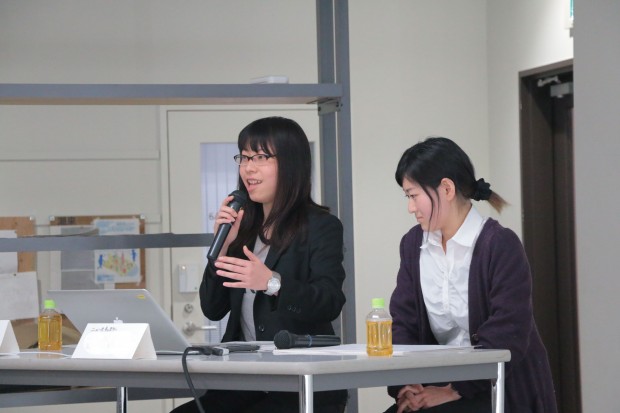
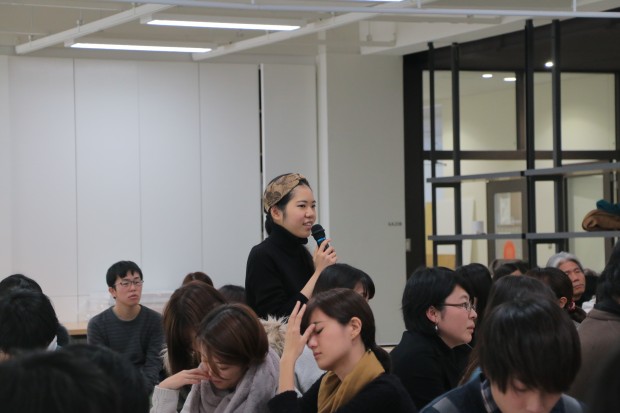


Vacant Properties Team held Idobata Gallery
The Vacant Properties Team held “Idobata Gallery” from Nov. 1 till Nov. 5.
By displaying artworks at a vacant property not in use, our goal was to create a community space where people would naturally gather around and start up a conversation, just like the way people meet up by the office water cooler to chitchat on the current gossip.
We put on display the colorful autumn-colored happi coats that we made with the staff at Fureai House and the children of Hojo Elementary School at the workshop on Oct. 24.
Many people stopped by to take a look at the exhibit, and we had a great time striking up friendly conversations with the visitors and taking photographs with them wearing the happi coats. The children who took part in the workshop came, too, wearing their original “my happi coat”!
Through the kindness of the Bureau for Promotion of Town Development, we also had the opportunity to exhibit the happi coats at a concert by the Vienna Piano Quartet that was held at Miyasei-Okura on Nov. 14. The members of the Vienna Philharmonic put on the happi coats for us, too!
The classical music concert at Miyasei-Okura.The classical music concert at Miyasei-Okura.
(Muranaka, 4th year at College of Policy and Planning Sciences)

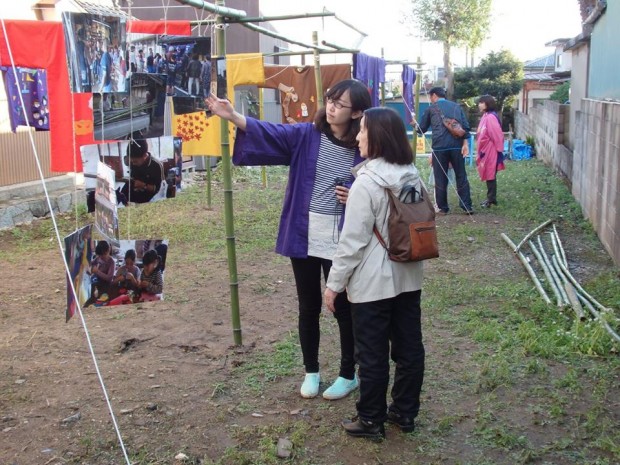
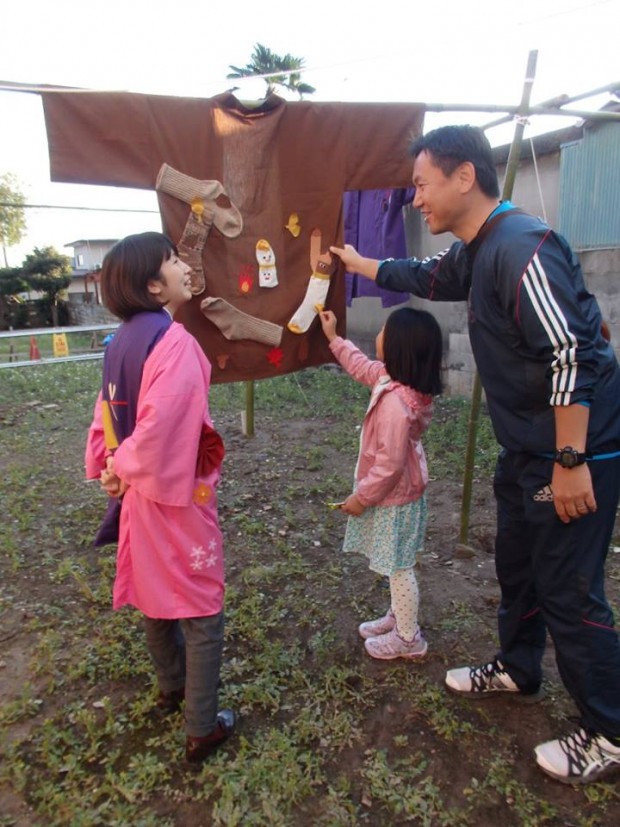
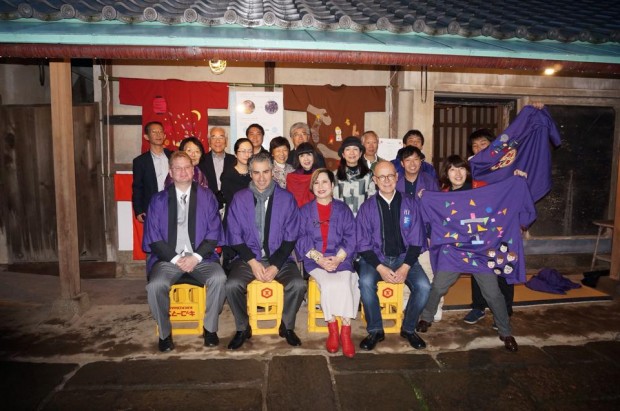
Vacant Properties Team held “Workshop to make Happi coats”.
On Oct. 24, the Vacant Properties Team held a workshop to make happi coats with the children of Hojo Elementary School.
It was a project in preparation for the “Idobata Gallery” held on Nov. 1, and together with the 5-autumn-colored happi coats for the exhibition, each participant decorated his/her own “my happi coat” at the workshop.
The “Idobata Gallery” was held in time with 2 other festivals, the Autumn Hojo Market and Mt. Tsukuba Foothills Autumn Festival, and by having the children and Vacant Properties Team members wear happi coats, we hoped to attract the attention and interest of the young generation to the festivals and the locality.
We also wished the children to get a feel of the history of Hojo by making the happi coats at the Hojo Fureai House, which used to be a kimono store.
The children were at first somewhat slow to start, but once they got the idea, they used their imagination and added their own original decorations. Since everyone worked very hard, many wonderful happi coats were made. We couldn’t wait to see them at the Idobata Gallery exhibition!
We would like to thank the staff at the Fureai House for all their support, not just on the day, but for teaching us how to sew the happi coats and helping us with other procedures as well. Thank you very much!
(Muranaka, 4th year at College of Policy and Planning Sciences)
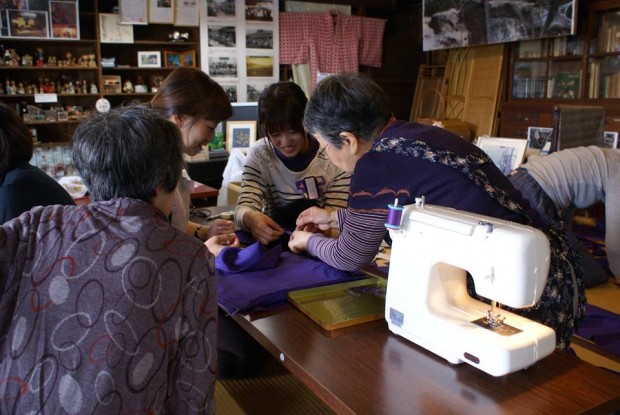
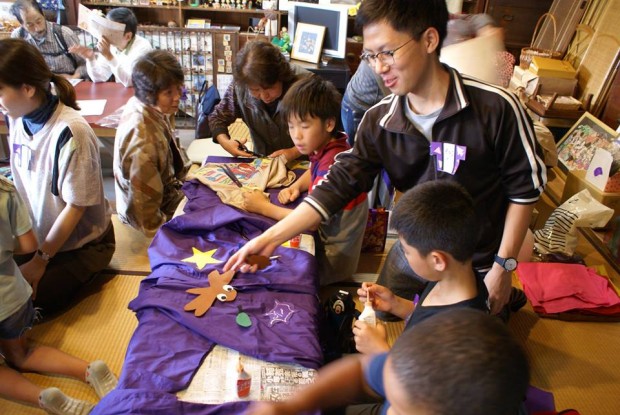
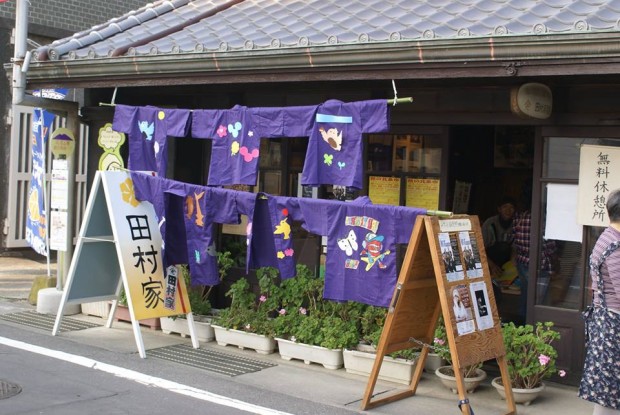
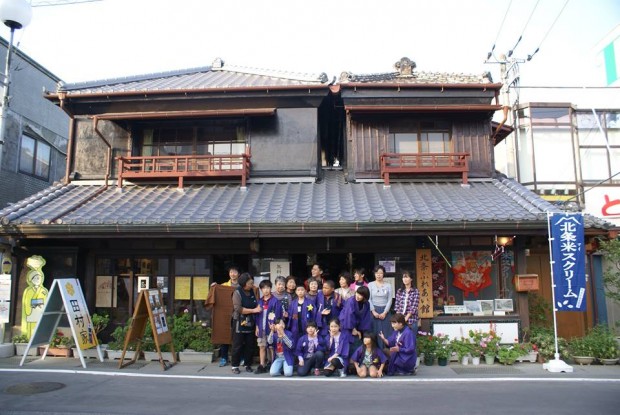
An exhibition introducing last year’s Hybrid Art Assignments will be held.
At the new GALLERY OFF GRID, which opened in Fukushima Prefecture, an exhibition introducing last year’s activities of the Hybrid Art Assignments will be held.
If you are in the vicinity, please come and check it out. (Akagi)
Into the Future of OFF GRID: Issues that Art Raises about Fukushima’s Renewable Energy.
Takuro Osaka x Fumiaki Murakami’s Lab at University of Tsukuba
Dates: Friday, Dec. 11, 2015 ~ Friday, Jan. 29, 2016
Time: 10:00 ~ 17:00
Venue: Gallery Off Grid (Fukushima-shi Aramachi, 4-7, Kencho Minami Sai-Ene Bldg. 2F)
Organizer: Gallery Off Grid Managing Committee
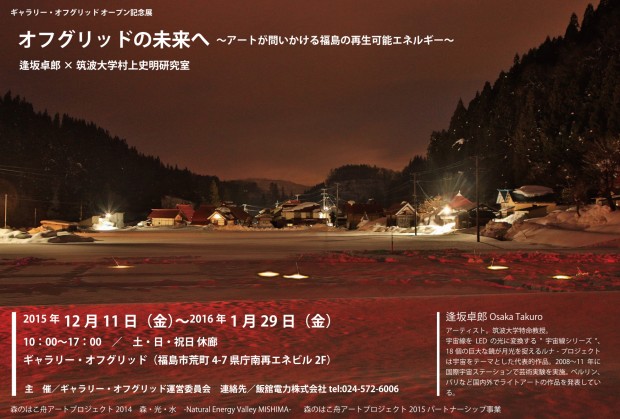

Preview: Catastrophe & Art, Session 8
At the Creative Reconstruction: Catastrophe & Art, Session 8, Junji Teraguchi, Deputy Director at the Hiroshima City Museum of Contemporary Art, will be invited to give a talk under the theme, “Hiroshima and Artists”.
Please come as anyone can attend.
(Akagi)
Date & Time: Dec. 4, Friday, 6th Period, 16:45-18:00
Venue: 5C416
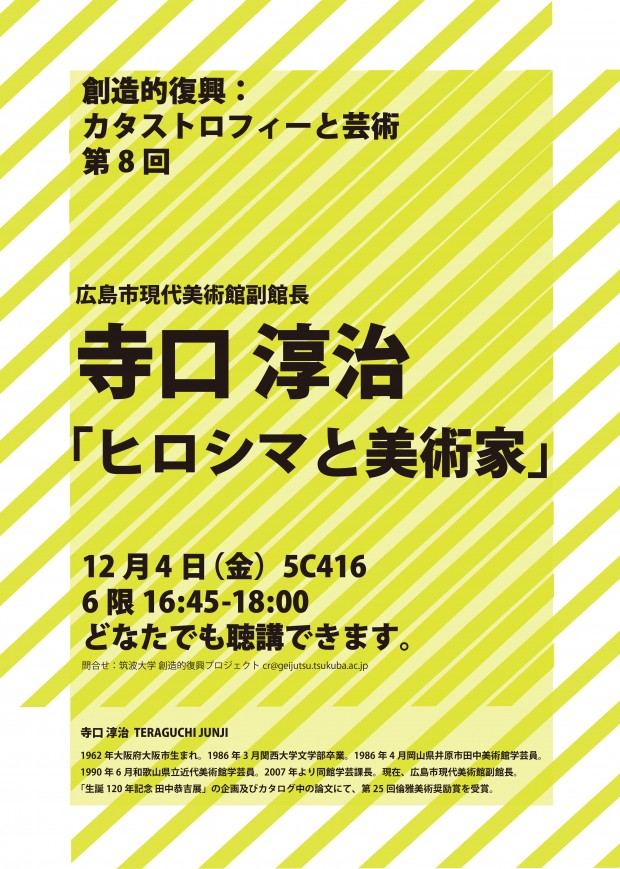
Kamado Project “The Autumn Hojo Market”
The Autumn Hojo Market was held on Nov. 1. Although it is getting colder by the day, we were blessed with good weather and got off to a good start!
This time, the Kamado Project workshop attempted to make one’s own kamado, “my kamado”. At first, everyone was like, “What do you mean by my own kamado? But as we got started, we ended up making many charming kamado, as people were absorbed in making their own unique shapes and fixing stones and colorful bricks to their original kamado. The shaped kamado is normally dried under the sun for 2 or 3 days, but this time for faster drying, we used a large earthen charcoal-burning kiln. The children, who also took part, watched with great interest their kamado being fired like a pizza.
In the evening after the Hojo Market was over and everything cleaned up, the Kamado Project team and the members of the Hojo Commerce and Industry Association and the Development and Promotion Bureau got together for a social and friendly dinner. It was an opportunity for the new members of the Kamado team who joined us this year to formally meet the people of Hojo. We heard stories about the beginnings of the Kamado Project, when they started working in Hojo, and about the tornado, which was why the project started in the first place. We had a very enjoyable time with delicious dishes and good sake. We hope to continue our activities with the blessings and favors of the Hojo people.
(Machinaga, 3rd Year at School of Art & Design)
